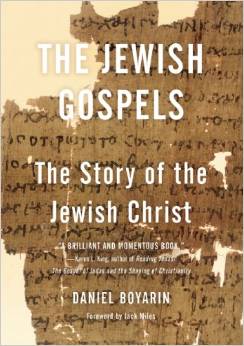
Daniel Boyarin is a Jewish scholar of some repute. His work is worth consideration alongside what often amounts to little more than Christian apologetics thinly disguised as disinterested scholarship. In The Jewish Gospels: The Story of the Jewish Christ Boyarin argues that the Christian belief in a suffering messiah who atones for our sins was far from some bizarre offence to Jews but in fact was itself an established pre-Christian Jewish interpretation of the books of Isaiah and Daniel.
“But what about Paul writing to the Corinthians about the cross of Christ being an offence to the Jews?” you ask. And in response I will step aside and allow a professor of ancient history at Columbia University, Morton Smith, to explain that most Christians have badly misunderstood that passage: see Was Paul Really Persecuted for Preaching a Crucified Christ?
So this post will look at Daniel Boyarin’s argument for the very Jewish (pre-Christian) understanding of the suffering messiah.
The idea of the Suffering Messiah has been “part and parcel of Jewish tradition from antiquity to modernity,” writes Boyarin, and therefore the common understanding that such a belief marked a distinct break between Christianity and Judaism is quite mistaken.
The evidence for this assertion? This post looks at the evidence of Isaiah 53. (Earlier posts have glanced at Boyarin’s discussion of Daniel in this connection.) Christians have on the whole looked at Isaiah 53 as a prophecy of the suffering Messiah. Fundamentalists have viewed the chapter as proof-text that Jesus is the Christ (Messiah). Jews, it has been said, reject the Christian interpretation and believe the passage is speaking metaphorically about the people of Israel collectively. Before continuing, here is the passage itself from the American Standard Version: Continue reading “Suffering Messiah Is a Very Jewish Idea”

